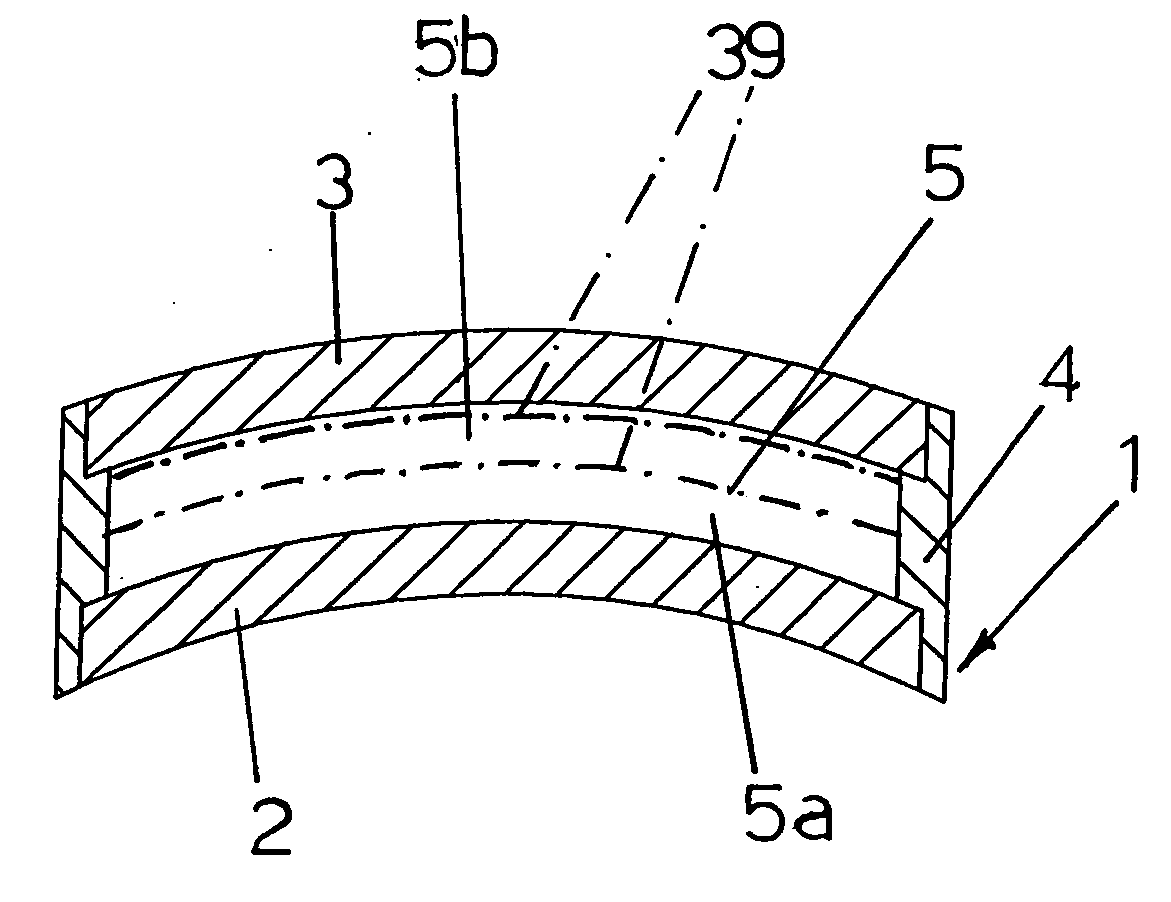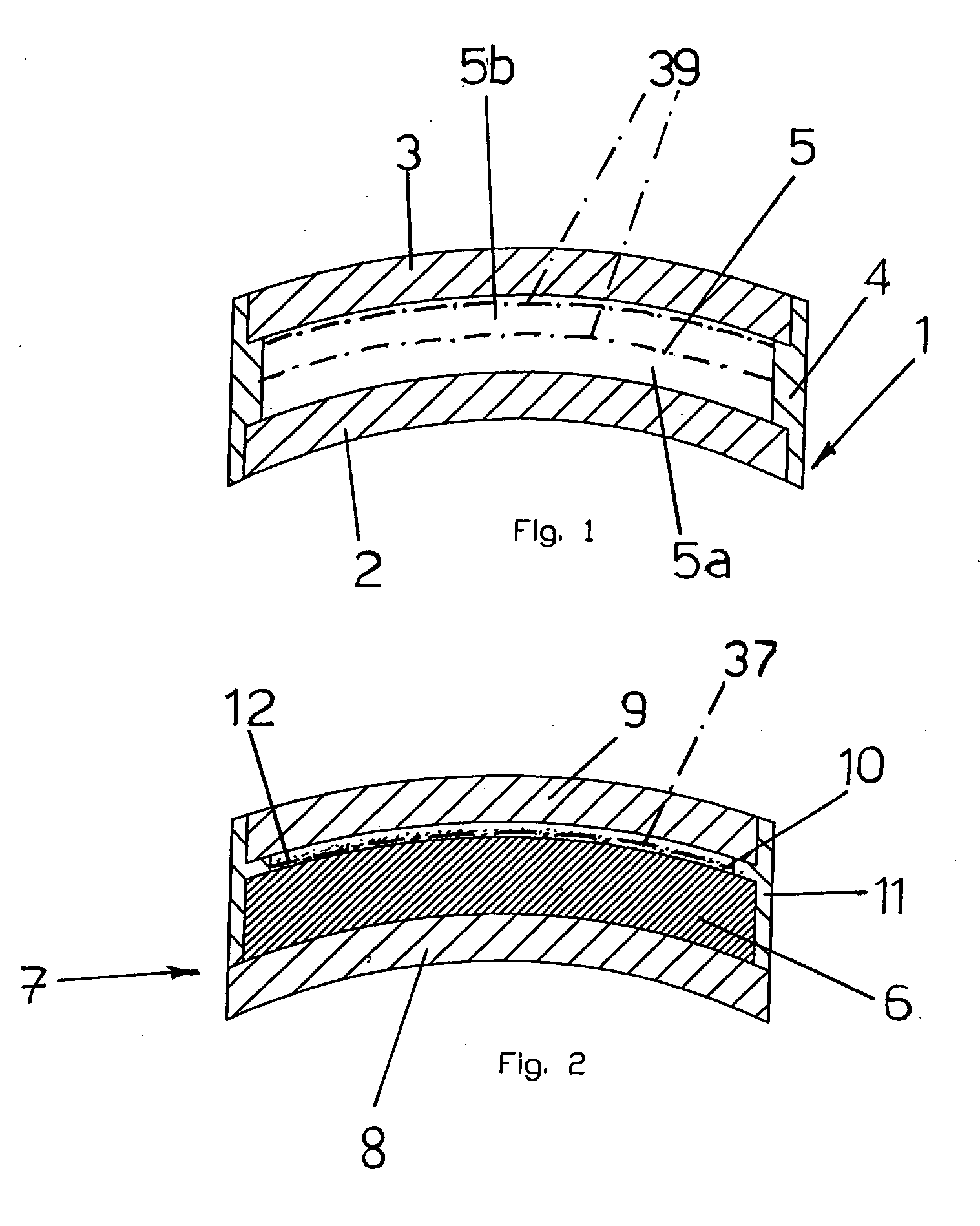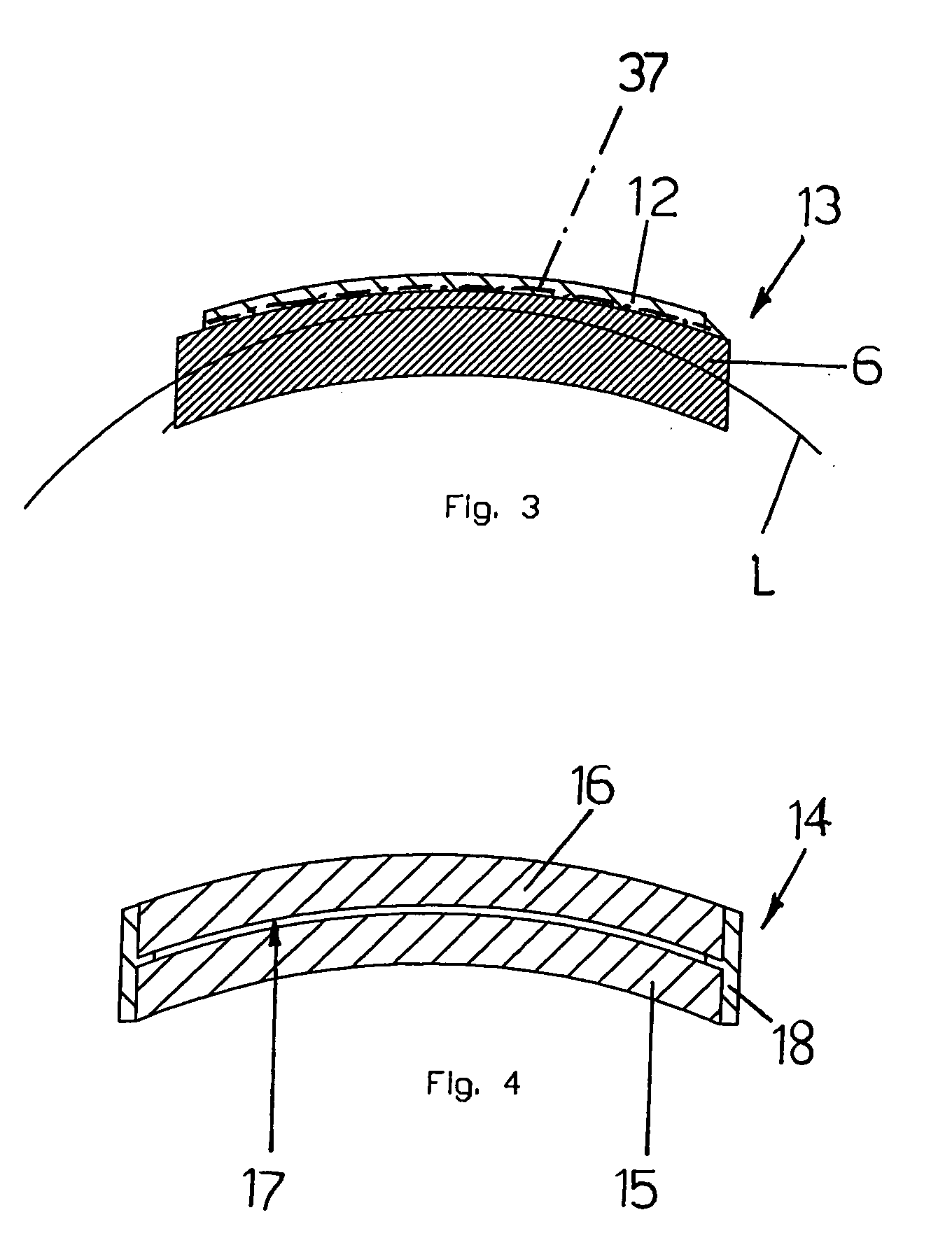Method for manufacturing an optical element made of thermosetting plastic material for use in eye-protecting devices and optical element thus obtained
a thermosetting plastic and manufacturing method technology, applied in the direction of optics, lenses, instruments, etc., can solve the problems of non-optimal optical characteristics of moulding, drawbacks of relatively high cost, and jeopardize the optical properties of the optical element, and achieve the effect of low cos
- Summary
- Abstract
- Description
- Claims
- Application Information
AI Technical Summary
Benefits of technology
Problems solved by technology
Method used
Image
Examples
example 1
Manufacturing of a Non-Polarising Optical Element
[0361]A bicomponent thermosetting polyurethane resin comprising:
[0362]Component A: polyurethane liquid prepolymer having an isocyanate group content of 11%, commercially available from Simula Inc. with the trade name of SIM2020, including UV absorber Uvinul® 3049 (BASF) at the concentration of 0.3% by weight, and
[0363]Component B: 1-methyl-3,5-diethyl-2,4- and / or -2,6-diaminobenzene (also known as 3,5-diethyl-2,4-and / or-2,6-toluenediamine) or DETDA available from Alberarle with the commercial name Ethacure® 100,
[0364]is cast into the cavity 5 of the mould 1 illustrated in FIG. 1 and partially cross-linked at 120° C. by means of a heat cycle of 60 minutes.
[0365]The partially cross-linked optical part thus obtained (layer 6) is then extracted from the mould 1 and the partial cross-linking is verified by observing the presence of unreacted isocyanate groups by means of known FT-IR analysis techniques.
[0366]The partially cross-linked opti...
example 2
Manufacturing of a Non-Polarising Optical Element
[0372]A bicomponent thermosetting polyurethane resin comprising:
[0373]Component A: polyurethane liquid prepolymer having an isocyanate group content of 11%, commercially available from Simula Inc. with the trade name of SIM2020, including UV absorber Uvinul® 3049 (BASF—0.3% by weight), and
[0374]Component B: DETDA available from Albemarle with the commercial name Ethacure® 100,
[0375]is cast into the cavity 17 of the mould 14 illustrated in FIG. 4 and partially cross-linked at 120° C. by means of a heat cycle of 60 minutes.
[0376]The partially cross-linked optical part thus obtained (layer 19) is then extracted from the mould 14 and the partial cross-linking is verified by observing the presence of unreacted isocyanate groups by means of known FT-IR analysis techniques.
[0377]A portion of the partially cross-linked optical part (layer 19) is then dyed by means of heat transfer in liquid phase by immersing the partially cross-linked optica...
example 3
Manufacturing of a Polarising Optical Element
[0384]A bicomponent thermosetting polyurethane resin comprising:
[0385]Component A: polyurethane liquid prepolymer having an isocyanate group content of 11%, commercially available from Simula Inc. with the trade name of SIM2020, including UV absorber Uvinul® 3049 (BASF) at the concentration of 0.3% by weight, and
[0386]Component B: 1-methyl-3,5-diethyl-2,4- and / or -2,6-diaminobenzene (also known as 3,5-diethyl-2,4-and / or -2,6-toluenediamine) or DETDA available from Alberarle with the commercial name Ethacure® 100,
[0387]is cast into the cavity 5 of the mould 1 illustrated in FIG. 1 and partially cross-linked at 120° C. by means of a heat cycle of 60 minutes.
[0388]The partially cross-linked optical part thus obtained (layer 6) is then extracted from the mould 1 and the partial cross-linking is verified by observing the presence of unreacted isocyanate groups by means of known FT-IR analysis techniques.
[0389]The partially cross-linked optical...
PUM
| Property | Measurement | Unit |
|---|---|---|
| temperature | aaaaa | aaaaa |
| temperature | aaaaa | aaaaa |
| temperature | aaaaa | aaaaa |
Abstract
Description
Claims
Application Information
 Login to View More
Login to View More - R&D
- Intellectual Property
- Life Sciences
- Materials
- Tech Scout
- Unparalleled Data Quality
- Higher Quality Content
- 60% Fewer Hallucinations
Browse by: Latest US Patents, China's latest patents, Technical Efficacy Thesaurus, Application Domain, Technology Topic, Popular Technical Reports.
© 2025 PatSnap. All rights reserved.Legal|Privacy policy|Modern Slavery Act Transparency Statement|Sitemap|About US| Contact US: help@patsnap.com



